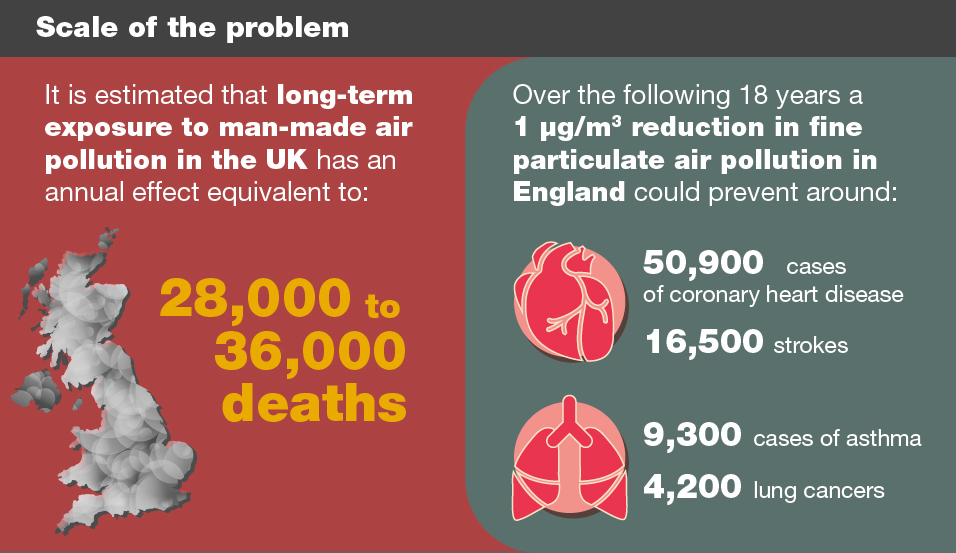Proposal to implement a low emission zone
Context
Air pollution comes from a diverse range of sources, including industry, transport, burning of solid fuels in the home, and the use of cleaning products. It poses the single greatest environmental risk to human health.
Now the UK has left the EU, we have the opportunity to take a more tailored approach to UK action on air quality even as we continue to be willing partners and allies with our European and international friends in the effort to reduce transboundary air pollution. For example, we are developing targets that are focused on tackling the sources of emissions most relevant to a UK context to deliver significant public health benefits for our citizens.
Short-term exposure to elevated levels of air pollution can cause a range of health effects and is a particular threat to vulnerable groups, including the elderly, very young, and those with existing health issues. However, long term exposure affects us all, with long-term exposure to man-made air pollution in the UK known to shorten lifespans.
View the health implications of NO2 emissions below:

Air pollution has reduced significantly over recent decades and will continue to improve thanks to the action we have already taken. For example, emissions of nitrogen oxides have fallen by 32% between 2010 and 2019 and are at their lowest level since records began, and emissions of fine particulate matter (PM2.5) have fallen by 11% between 2010 and 2019.
The key actions the government is taking to continue to reduce emissions from a wide range of sources are set out in two documents:
- In July 2017, the government published the UK Plan for Tackling Roadside Nitrogen Dioxide Concentrations (the NO2 plan) and subsequent supplement published in 2018, supported by a £3.8 billion investment into cleaner transport and air quality. This focuses on resolving the most immediate air quality challenge, which is nitrogen dioxide concentrations around roads, to ensure we meet our statutory air quality limits. A total of 28 local authorities were directed to produce plans to tackle NO2 exceedances. These had the most persistent exceedances and were required to consider introducing a charging Clean Air Zone. A further 35 had to develop plans to tackle shorter term exceedances.
- The Clean Air Strategy was published in January 2019, and welcomed by the World Health Organisation as “an example for the rest of the world to follow”. It sets out the comprehensive action required across all parts of government to meet our legally binding targets to reduce emissions of five key pollutants, fine particulate matter (PM2.5), sulphur oxides (SOx), nitrogen oxides (NOx), ammonia (NH3) and non-methane volatile organic compounds (NMVOCs), by 2020 and 2030, and secure significant public health benefits. This includes action to reduce emissions from a range of sources, including domestic solid fuel combustion, agriculture, and industrial sources. The Strategy also made a commitment to bring forward primary legislation on clean air, delivered in the Environment Bill.
